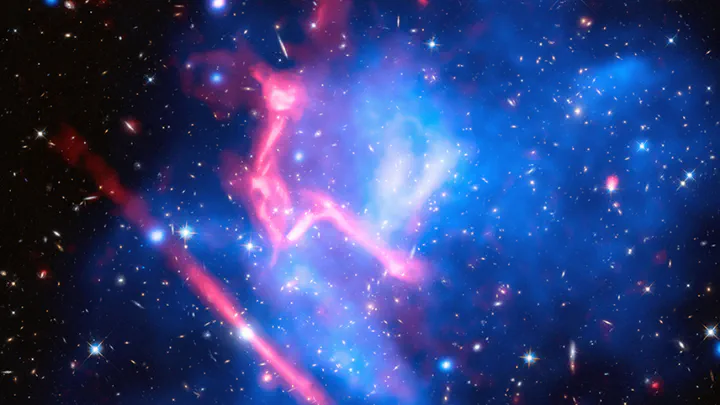Electron acceleration at shocks in merging galaxy clusters
 MACS J0717, credit: X-ray: NASA/CXC/SAO/G.Ogrean et al.; Optical: NASA/STScI; Radio: NRAO/AUI/NSF
MACS J0717, credit: X-ray: NASA/CXC/SAO/G.Ogrean et al.; Optical: NASA/STScI; Radio: NRAO/AUI/NSFParticles are accelerated at shocks via Diffusive Shock Acceleration (DSA), gaining energy while crossing a shock multiple times. This process only works from a certain initial energy, which is a more important constraint for electrons than for protons (ions) due to their smaller mass. This is known as the electron injection problem, and it is still a missing puzzle to complete the picture of DSA.
The aim of this project is to study the electron pre-acceleration conditions at galaxy clusters shocks using particle-in-cell simulations. This is the ab-intitio method for kinetic plasma theory, which resolves the microphysics of collisionless shocks. Current studies focus on Stochastic Shock Drift Acceleration (SSDA): an efficient mechanism of electron pre-acceleration. It requires the presence of multiscale turbulence in the shock transition, including shock ripples (shock front corrugations).